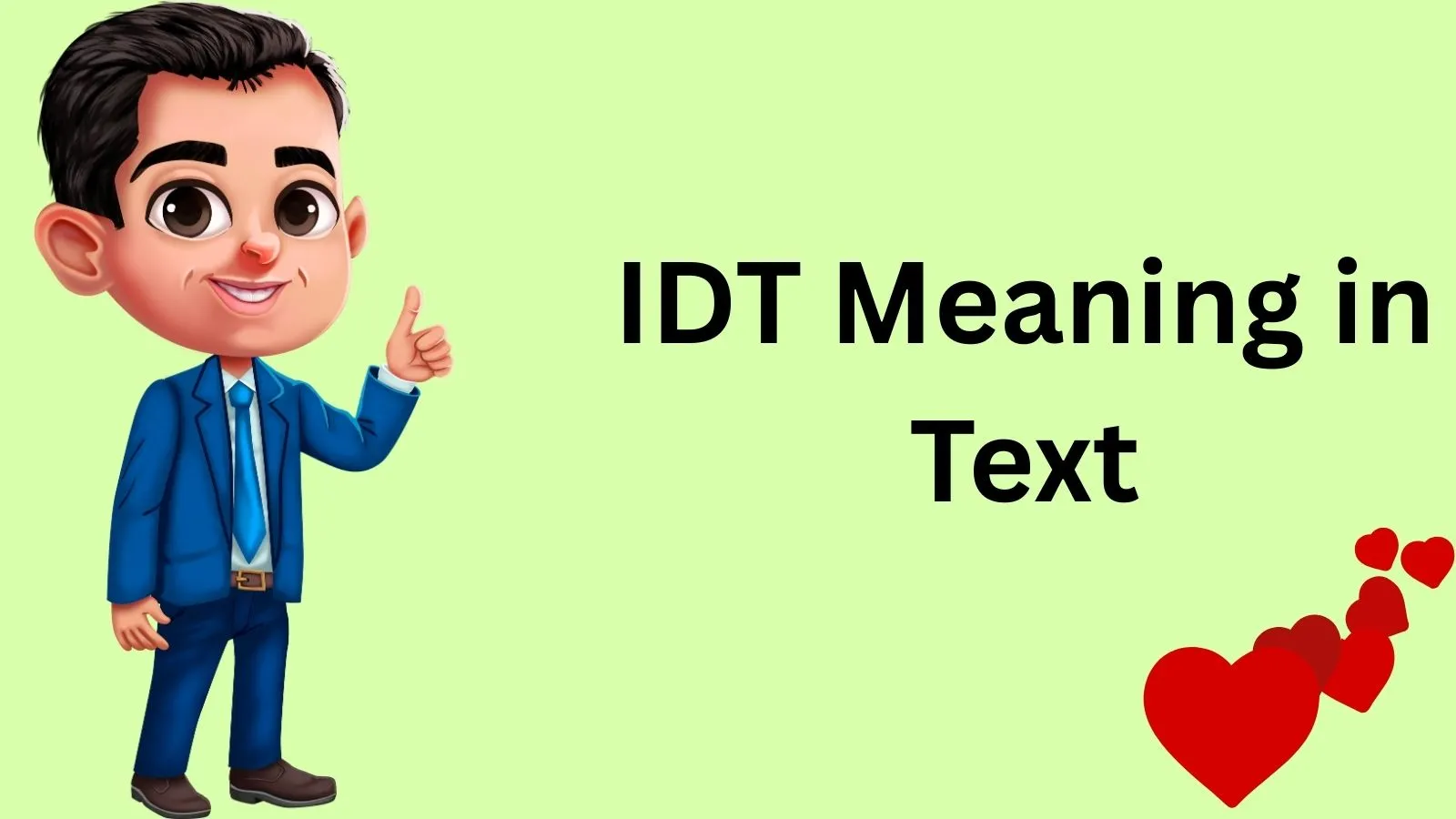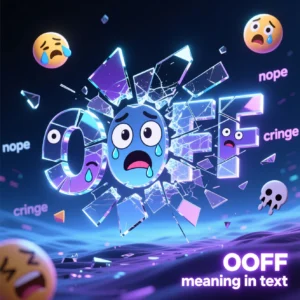In today’s fast-paced digital world, texting and online communication have become a language of their own. Abbreviations and slang terms like IDT are everywhere, from casual chats to social media posts. But what does IDT mean, and why is it important to understand?
IDT stands for “I Don’t Think”, a shorthand way to express doubt or disagreement. It’s commonly used in texting, gaming, and social media to save time and keep conversations flowing. Whether you’re chatting with friends, posting on Twitter, or engaging in online gaming, knowing the meaning of IDT can help you stay in the loop and avoid misunderstandings.
In this blog post, we’ll dive deep into the meaning of IDT, its origins, and how it’s used in different contexts. We’ll also address common misconceptions, provide response tips, and explore its suitability in professional settings. Let’s get started!
Definition & Meaning
IDT is an acronym for “I Don’t Think”. It’s used to express uncertainty, doubt, or disagreement in a concise way. For example:
- Friend 1: “Do you think we’ll finish the project on time?”
- Friend 2: “IDT so, we still have a lot of work left.”
This abbreviation is popular because it’s quick to type and fits perfectly into fast-paced digital conversations. It’s often used in informal settings like texting, social media, and gaming chats.
Background & History
The use of abbreviations like IDT dates back to the early days of texting, when character limits and slow typing speeds made shorthand essential. Over time, these abbreviations became a staple of online communication, especially among younger generations.
IDT gained traction in the 2000s with the rise of instant messaging platforms like AIM and MSN Messenger. Today, it’s widely used across social media platforms like Twitter, Instagram, and TikTok, as well as in gaming communities like Discord and Twitch.
While IDT hasn’t changed much in meaning, its usage has expanded. It’s no longer limited to texting; it’s now a part of everyday digital language.
Usage in Various Contexts
IDT is versatile and can be used in many situations. Here’s how it fits into different contexts:
1. Texting
- Person A: “Are you coming to the party tonight?”
- Person B: “IDT I can make it, I have work early tomorrow.”
2. Social Media
- Tweet: “IDT this new movie is worth the hype. Anyone else feel the same?”
3. Gaming
- Player 1: “Do you think we can win this round?”
- Player 2: “IDT, the other team is too strong.”
4. Casual Conversations
- Friend 1: “Do you think it’s going to rain today?”
- Friend 2: “IDT, the sky looks clear.”
Common Misconceptions & Clarifications
One common misconception is that IDT stands for “I Didn’t Think”. While this interpretation makes sense in some contexts, it’s not the standard meaning. IDT almost always means “I Don’t Think”.
Another misunderstanding is that IDT can be used in formal writing. However, it’s best reserved for informal conversations. Using it in professional emails or reports might come across as unprofessional.
Similar Terms & Alternatives
Here are some related terms and their meanings:
| Term | Meaning |
| IDK | I Don’t Know |
| IDC | I Don’t Care |
| IMO | In My Opinion |
| TBH | To Be Honest |
While these terms are similar, they serve different purposes. For example, IDK expresses uncertainty, while IDT conveys doubt or disagreement.
How to Respond to This Term
How you respond to IDT depends on the context. Here are some examples:
1. Casual Response
- Friend: “IDT we should go out tonight.”
- You: “Yeah, maybe we can just chill at home.”
2. Funny Response
- Friend: “IDT this pizza is as good as they say.”
- You: “Blasphemy! This pizza is a masterpiece!”
3. Professional Response
- Colleague: “IDT we’ll meet the deadline.”
- You: “Let’s reassess our priorities and see what we can adjust.”
Regional or Cultural Differences
IDT is primarily used in English-speaking countries, but its usage has spread globally thanks to the internet. In some regions, people might use local slang instead. For example, in Spanish-speaking countries, “No creo” serves a similar purpose.
Comparison with Similar Terms
| Term | Meaning | Context |
| IDT | I Don’t Think | Expressing doubt or disagreement |
| IDK | I Don’t Know | Expressing uncertainty |
| IDC | I Don’t Care | Expressing indifference |
Usage in Online Communities & Dating Apps
On platforms like Tinder or Twitter, IDT is often used to express opinions or preferences. For example:
- Tinder Bio: “IDT pineapple belongs on pizza. Fight me.”
In gaming communities, it’s used to strategize or express doubts about winning.
Hidden or Offensive Meanings
IDT doesn’t have any hidden or offensive meanings. However, tone and context matter. Using it sarcastically might come across as rude.
Suitability for Professional Communication
IDT is not suitable for formal communication. Instead, use phrases like:
- “I don’t believe that…”
- “I’m not sure if…”
FAQs
- What does IDT stand for?
- It stands for “I Don’t Think”.
- Is IDT used in formal writing?
- No, it’s best for informal conversations.
- Can IDT be misinterpreted?
- Rarely, but context is key.
- Are there alternatives to IDT?
- Yes, like “I don’t believe” or “I’m not sure”.
- Is IDT used globally?
- Mostly in English-speaking countries, but it’s spreading.
Conclusion
Understanding IDT and its usage can make your digital communication smoother and more effective. Whether you’re texting, gaming, or posting on social media, this abbreviation is a handy tool for expressing doubt or disagreement. Just remember to use it in the right context and avoid it in formal settings.



Pingback: OPT Meaning in Text: A Comprehensive Guide (Clear and Practical)